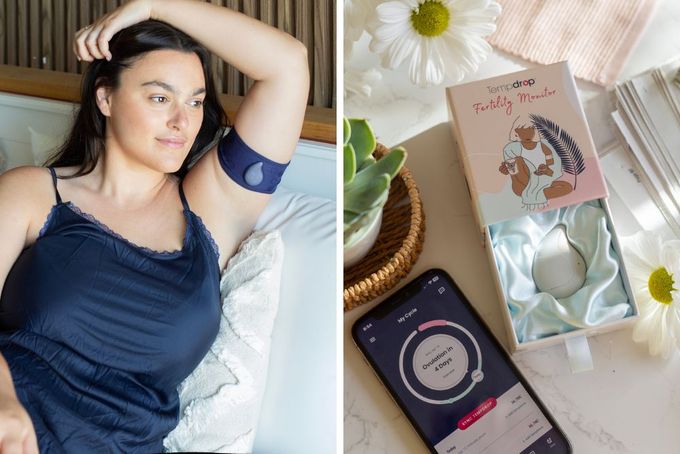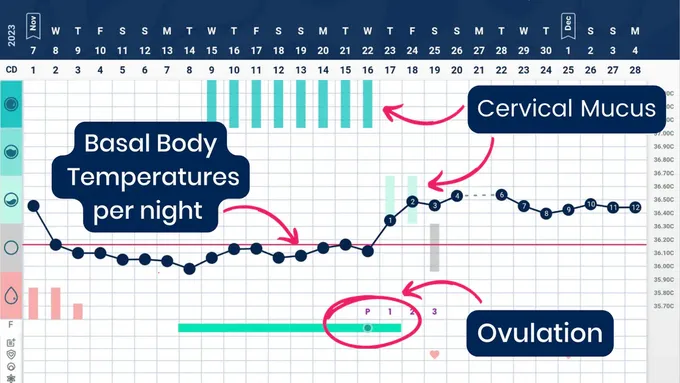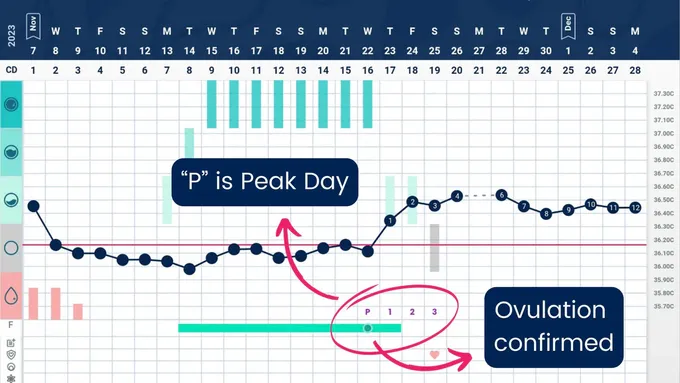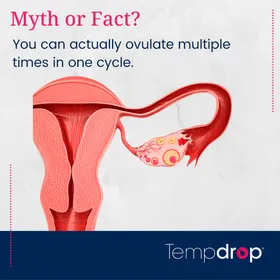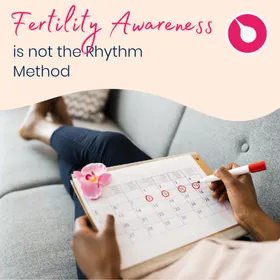Basal Body Temperature: All Your Questions Answered Part II
Updated March 18, 2025.
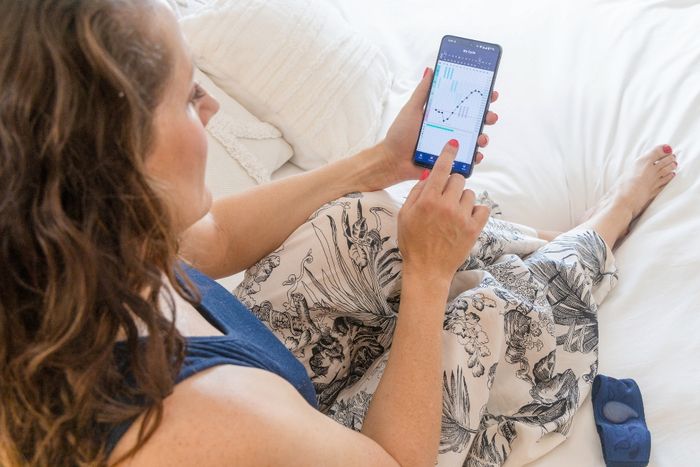
As one of the main observable signs of your fertility status, basal body temperature (BBT) is key in using many fertility awareness methods for any family planning intention, or for charting your cycle for health. If after reading this you still have burning questions, please ask them on Tempdrop's Instagram!
If you missed Part I or want to jump on to Part 3, go check them out!
If I miss a day temping, do I have to scrap the whole month of fertility awareness charting?
Having a day or two of missed temperatures in your chart isn't the end of the world. You most definitely don't need to scrap the whole cycle! It's still possible to read a temperature shift with missed temperatures, although you may need to wait an extra day to confirm ovulation if it so happens to be around ovulation. Ensuring you are charting both cervical fluid and basal body temperature will give you a backup indicator of fertility if you miss a day of temping.
There are some things you can do to make using fertility awareness a little easier to use, and eventually you will be able to take some shortcuts, especially with the help of an instructor. One of those shortcuts is using Tempdrop. It is a heck of a lot easier to stick with taking your basal body temperature. All you have to remember to do is put your armband and turn the device on each night!
Another shortcut is taking a break from taking your temperatures during your period. Your temperatures may be slightly erratic during your period anyways, so if you’d like to miss some days, this would be the best time to miss them.
Is it possible to observe fertile cervical mucus (CM) on the first day of a temp shift?
Throughout any given menstrual cycle, you'll observe the effects of your reproductive hormones on the production of your CM. Cervical mucus, or cervical fluid, has a wide range of benefits, including helping sperm stay alive and nourished, and telling us our level of fertility. As ovulation approaches, cervical fluid becomes increasingly more sperm-friendly, meaning that it has more water content, and becomes more stretchy and clear.
The day of the most fertile CM around ovulation is known as the peak day.(Hot Tip: This is the day of highest fertility in your cycle! If you’re trying to conceive, this would be the best day to have intercourse.) Ovulation occurs within three days either side of peak day. That is, within three days before or after peak day.
Because your temperature almost always shifts after ovulation has happened, it's possible to observe fertile CM either before or after our temperature rise! This is why it can be helpful to track both CM and BBT (which you can do easily with a Tempdrop).
If you had circumstances leading to a questionable temperature, but it still falls in line with what you were expecting, is it still questionable?
A questionable temperature is a temperature you believe has been influenced by outside factors. With an oral basal body thermometer, your temperature can be impacted by any number of outside factors, such as:
- Drinking alcohol the night before
- Taking your temperature earlier or later than normal
- Sleeping in a room that is warmer or colder than your regular temperature
If you are using an oral BBT, it’s recommended to keep track of these factors in your chart. That way, you will learn what affects your temperature and what doesn’t.
If you believe you have circumstances that could lead to a questionable temperature, but no wonky temperature reading, you are probably just fine. No one person has the same factors impact their BBT. This is why you can track these circumstances in your chart and see what’s true for you!
With Tempdrop, outside factors are generally excluded from a temperature reading. This means that Tempdrop is smart enough to get your actual basal body temperature, even if you drink alcohol the night before, get up in the middle of the night, or travel to a different time zone. Learn a little more about the science behind Tempdrop here.
What does it mean if you get positive OPKs/LH tests, but no temperature shift?
You can learn more about ovulation predictor kits (OPKs) and luteinizing hormone (LH) tests here. In general, they both test luteinizing hormone, which rises suddenly around ovulation to trigger the release of an egg. Both tests are a helpful additional fertility sign, but they aren't foolproof.
For one, the rise of LH does not always indicate that ovulation will for sure happen. This means that you could have an OPK that reads positive, but no temperature shift. Because your temperature rises following ovulation, you can know that it has occurred, looking back. We can never predict ovulation, but we can know it has happened, retrospectively!
Also, some women may have contraindicated cycles for using LH tests (for example, many women with PCOS). These people may never see a "peak" reading, or may always see one. This makes them difficult to understand during cycles where LH is consistently high.
How long should I see elevated temps coming off of hormonal birth control?
Depending on what type of hormonal birth control you were on, and for how long, the length of time can vary as to how long it takes for your cycles to return to normal. For some women, their menstrual cycles can return right away, and for others it can take some time. You may experience delayed ovulation (or anovulation), shorter or longer cycles, abnormal bleeding, disrupted cervical fluid, or other hard-to-understand symptoms after coming off birth control.
If you are tracking your BBT, you will want to look for a sustained temperature shift that indicates ovulation has taken place. This means the communication between your brain and your ovaries is beginning to repair. If it doesn’t happen right away, be patient with yourself! Take care and nourish your body, and prioritize self care.
Learn more about charting when you come off hormonal birth control here.
Check out Part I and Part 3 of this series! Do you have more questions about BBT? If so, go ahead and ask them on Tempdrop's Instagram!
